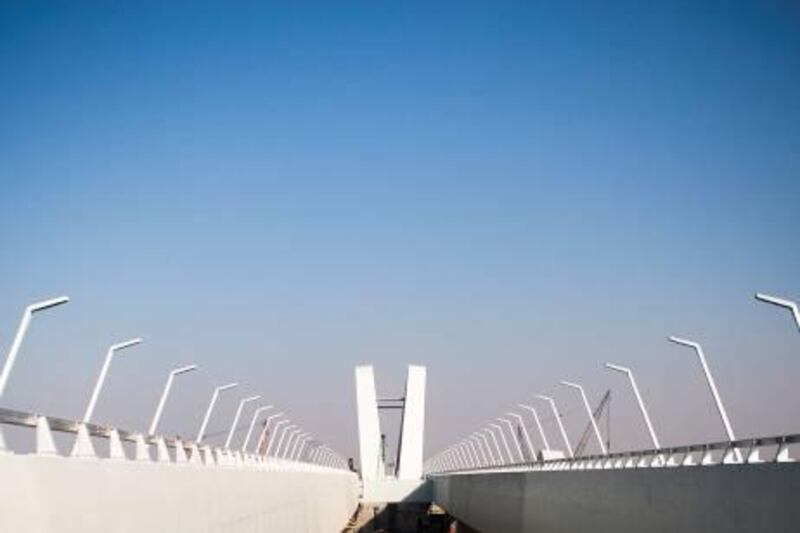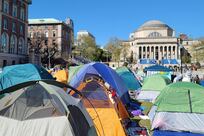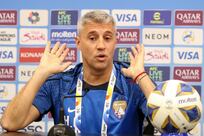ABU DHABI // The Sheikh Zayed Bridge is officially complete, and traffic should start flowing across it early next month.
Abu Dhabi Municipality confirmed yesterday that the Dh1 billion Zaha Hadid-designed link over the Maqta channel was ready for traffic and will open before the Abu Dhabi Grand Prix on November 12, following a nearly eight-year construction period mired in delays and budget overruns.
"We're ready to open the bridge as soon as possible," Abdullah al Shamsi, the municipality's director of infrastructure and assets, said yesterday.
Stress and load testing ended last weekend. "It's completed function-wise. It's a matter of just final arrangements with traffic police and other agencies. We expect that before the Formula One it will be open."
The wait to drive on the new gateway to the mainland would be "a matter of a couple of weeks, maximum", Mr al Shamsi added.
"Really, myself, I'm very proud about this bridge."
Mr al Shamsi spoke on the sidelines of a conference in the capital about innovations in bridge building in the Middle East.
The work that is left to be done for the 842metre-long bridge is minimal, consisting of tile laying for the emergency footpath, painting, signage on the links between both ends of the bridge and some dredging.
It can otherwise accommodate commuters immediately, said John Robinson, the project manager for High-Point Rendel, the supervising consultancy for the project.
"Structurally, as a road functioning on top, it's ready," Mr Robinson said during a tour of the site. "It would take 24 hours to tidy things up, but traffic could go on."
Aside from the street lamp fixtures, another of the finishing flourishes for the bridge will be its dynamic evening lighting system, with about 2,000 road and below-deck cells illuminating the bridge's arches in different colours.
"See the little masts up there? The short ones, they have lights on them like search lights," Mr Robinson pointed out during a boat ride under the main span.
"All of those lights are the feature lighting. They'll all be programmed to produce a bunch of patterns. It should be very, very impressive, with the lights passing across like a rainbow."
The lights will be finished in time for a grand opening ceremony, possibly for UAE National Day in December, he said.
The Sheikh Zayed Bridge is the third connector to the island, and is expected to reduce commute times by 15 minutes into the city, as well as ease traffic on the Al Maqta Bridge.
Walking along the finished deck under the main arch this week, Vardy Jones, the director of High-Point Rendel's infrastructure sector, recalled working on the project since 1994.
"It's a sense of relief. Certainly, in terms of what we've done, it's the most difficult bridge we've ever built," he said. "It's certainly unique. There's no bridge like this anywhere else."
The massive steel arches, meant to evoke prevailing wind patterns on sand dunes, were manufactured in Thailand and shipped to the capital in pieces.
"Depending on the prevailing winds, the sand dunes have a particular shape," he said. "This is the arch form. The architect wanted all the lines of the arches to be clear, and a prevailing dune shape to be leaning towards the island."
Working with complex forms and shapes was a challenge, as was the asymmetrical design.
"When you're down below, you'll see there were no piers holding up the deck in a vertical sense," Mr Jones said. "You've got the main deck, which you saw is supported by the arches and by the arms of the arches in such a way that the flow of the shape is all important, and that's what makes it difficult. The supports are not in the normal places you'd expect them to be."
Mike Davies, the assistant resident engineer on the project, said the ultimate test will be how commuters take to the bridge.
"At the end of the day, it's for the public," he said. "It's very impressive, but it's for them to see it and come and enjoy it, and we hope they'll like it."
jennifer.thomas@thenational.ae






